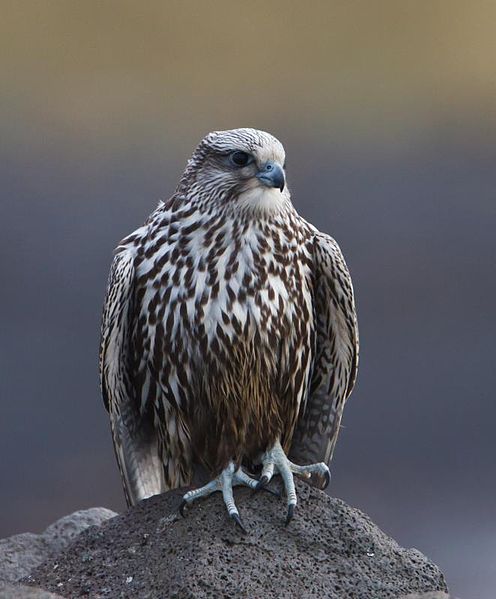
There are lots of things that I don’t know, but it’s not that often that someone tells me something and I think ‘Really? Can that be right? Sounds very odd! Never heard anything like that before’.
But that happened to me recently when I was contacted by someone I didn’t know who told me that the neighbourhood around where she lives is infested (she didn’t use that word) with free-flying Gyr Falcons.
Now a Gyr for most UK birders, must be one of the most hoped-for species. I’d love to see one, somewhere, some time, and so the idea that there are lots of them flying around some moorlands in Scotland sounded unlikely (I must admit) to me, but it appears to be true.
Does anyone out there know anything about this subject, please?
There is big money in captive breeding of Gyr Falcons for falconry in the Middle East (outside of the Gyr’s natural range by a long way) although many of the birds are actually hybrids between Gyrs and Peregrines – see the BirdLife International line on these. And there are a number of UK breeding centres (eg this one in Doncaster).
If this is all going on behind secure fences and tall walls then I guess it’s a rather quirky but slightly bizarre way to make a living, but it seems that the ‘best’ birds are produced (perhaps) with an element of wild hacking where the falcons are released for a while but enticed back into captivity with the provision of food. Letting lots of Gyr Falcons, or Gyr hybrids, fly around the moors of the UK is an interesting concept and I note that the Buccleugh Estate at Langholm was rather twitchy about this possibility – I don’t blame them.
The Moray area, around Dallas Moor, seems to be another of these sites where I have heard reports of large numbers of falcons being wild-hacked – can this possibly be true? If so then I think it would need a licence from SNH.
Does anyone know anything about this issue? There is one record of a Gyr Falcon wearing jesses in the rather good Moray and Nairn Bird Report for 2015.
If these birds are flying around grouse moors they probably don’t last long enough for birders to spot them. Yet more “disappearances”
We had one a few weeks ago. Flew all the way from Derbyshire but when the bloke came to collect it the bird decided to fly on and was later found near Edinburgh!
I have actually flown a Gyr/Saker cross on the moor here at Geltsdale at Red Grouse. The grouse have no chance if the bird is experienced.
Funny enough the real folk like ‘clean’ Red Grouse moors as there are no Peregrines to mob the bird while hunting!
Know one falconer who claimed his bird could kill Hen Harriers!!
Indian Bustard on the verge of extinction due to cow boy hunters!
I had heard of it enough to write an objection to the original proposal near Langholm. The birds are flown at hack as they fledge in order to strengthen their wing muscles and are fed from a hack box, by and large they do not wander and do not hunt. John shows that there are however exceptions and a very few wander off. I did know falconers prefer moors with no Peregrines or Eagles. There are a number of records particularly in the USA of falconry birds being killed by eagles.
I rather like the photo you have used Mark and yes I have seen Gyr in the wild two in the UK and one in northern Sweden but none of them white, the ultimate falcon.
Given the shape and weight of a Gyr in a stoop, which admittedly they rarely use, they must be faster than a Peregrine.
Hi Paul,
I am taking the liberty to reply to your comment. My community has been heavily affected by two large breeding facilities in the immediate area. Would you be able to tell me whether the community in Langholm experiences problems with wild hacking?
Are falcons still bred/reared in your area, even if they are not wild hacked? Just trying to get a picture of the extent of falcon breeding/rearing for ‘business’ in Scotland.
Sonja
I don’t know anything about this in particular. However, I remember with horror reading the list of species shot on a Scottish estate in the 19th Century which contained all sorts of raptors, including Gyr Falcons.
We’ve hacked a few falcons in the past. It’s a traditional falconry method used to help falcons improve their flight skills. It’s also used in rehabilitation and conservation for species re-introduction projects, e.g the re-introduction of peregrines in North America and Europe. Christian Saar and Tom Cade were heavily involved in these projects and both are falconers.
The juvenile falcons are usually out at hack for 2-3 weeks. They’re fed daily and caught before they start hunting. Most falcons these days are fitted with a radio and/or GPS transmitter so even if they are lost they can be recovered. Most falcons tend to stay around the hack box, but there is always a risk that one or two will die due to predation, injury, etc.